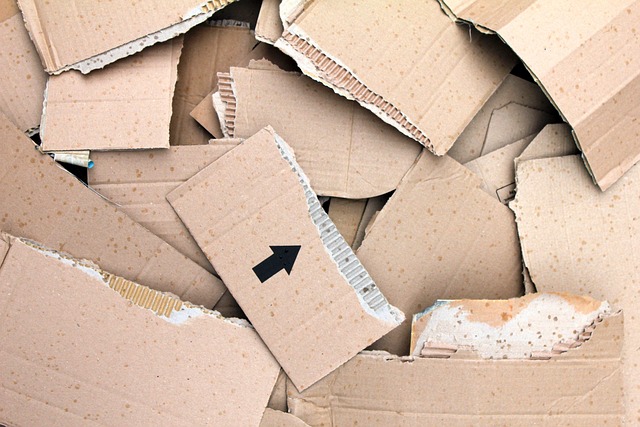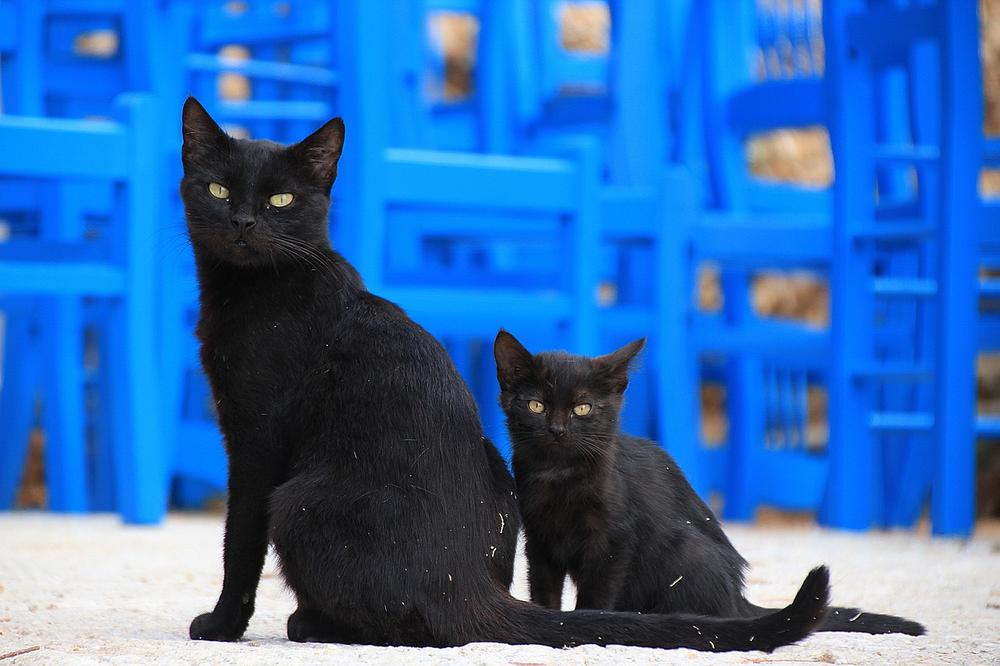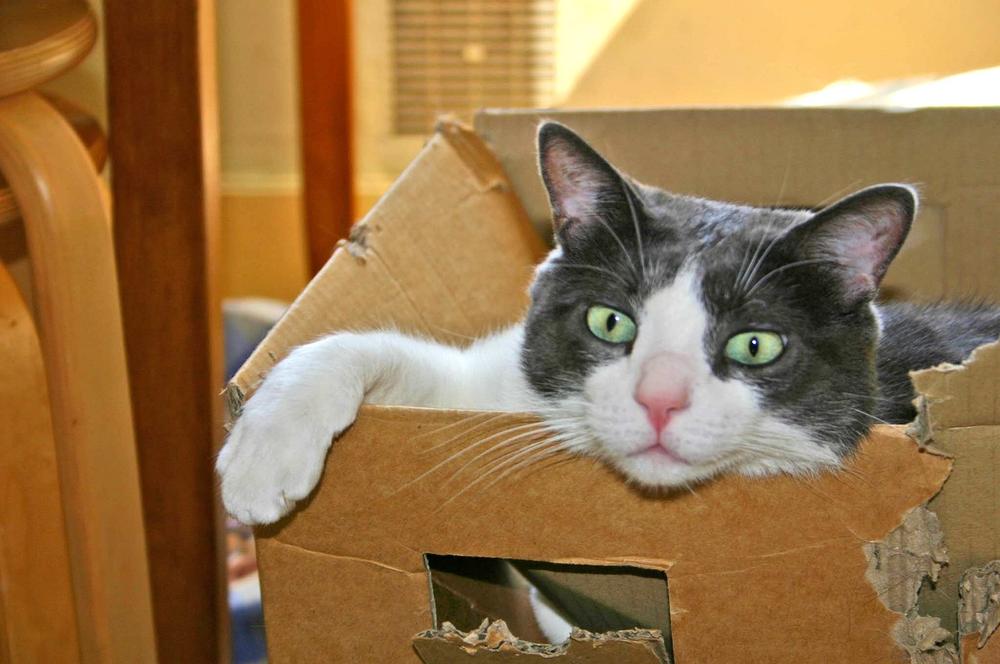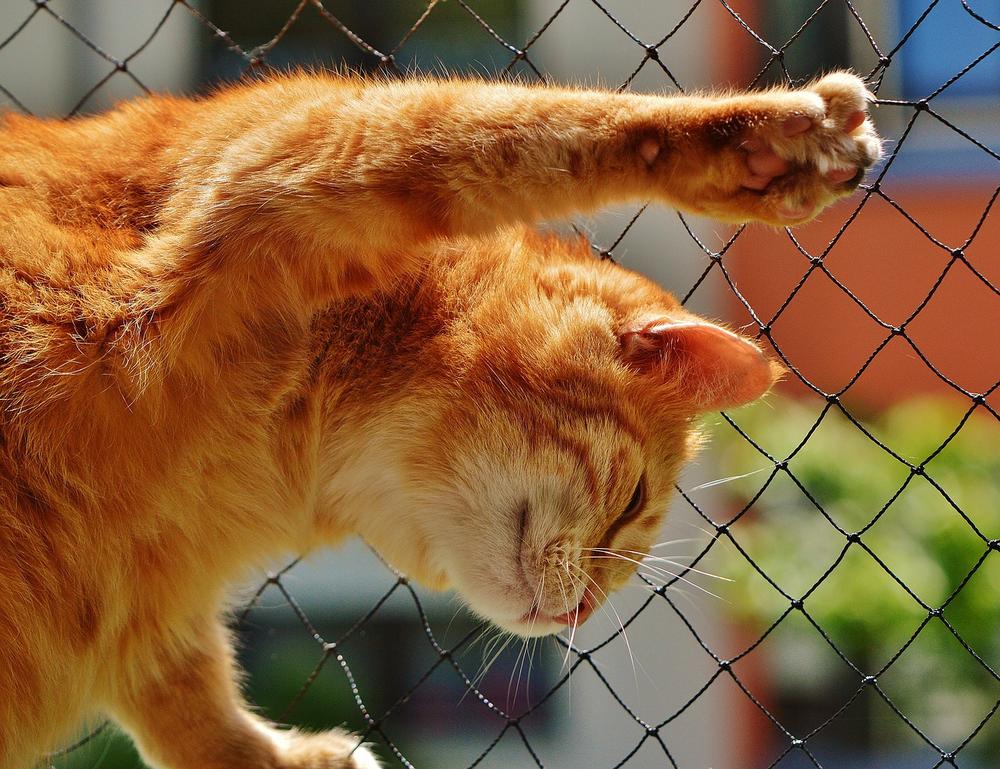Is Your Cat Eating CARDBOARD? Then Read This Right NOW!

Can I be brutally honest with you?
Your cat eating cardboard is like a quicksand pit, sucking you into a depressing cycle of worry and frustration. 😿
The health and behavior of your feline friend are at stake, and I understand the concern.
In this I Care for Cats guide, I'll reveal the solution.
Ready to act?
Let's dive in!
Understanding Cat Behavior: Cardboard Chewing vs. Cardboard Eating
Cats chewing on cardboard is a normal behavior that provides sensory stimulation and the satisfaction of biting into something. However, excessive chewing may indicate pica, a compulsion to gnaw on non-edible objects. Cats typically do not swallow the cardboard, leaving behind shredded pieces.
You're sitting on the couch, completely absorbed in your favorite TV show, when you hear that familiar sound.
Crunch.
You glance over and yup, there's your cat happily munching away on a cardboard box.
But hold up, before you start panicking, let me break it down for you.
First off, cats chewing on cardboard is totally normal.
It gives them a stimulating sensory experience and that gratifying sensation of sinking their teeth into something.
However, this chewing habit might go beyond a mere nibble. It could actually be pica, a compulsion where cats have a strong urge to gnaw on non-edible things like cardboard.
But don't wig out just yet.

When your kitty chomps on cardboard, they usually don't actually swallow it.
They leave behind a trail of shredded pieces (which can be super annoying to clean up, trust me).
So, while it may seem weird to us humans, indulging in cardboard is perfectly fine in the world of our lively feline friends.
And hey, let's not forget their obsession with hiding out in cardboard boxes - another peculiar aspect of their behavior that keeps them entertained for hours!
Whether they're chewing, playing, or simply seeking a cozy hideaway, cardboard has some kind of magnetic pull on these adorable creatures.
So next time your furball feasts on some cardboard, remember:
It's just part of their captivating cat character.
Now, you might be wondering...
What are the potential health issues that can lead to cats chewing on cardboard?
Well, get ready to uncover the surprising connections between pica and dental problems, as well as the role genetic factors and certain breeds play in this unique behavior:
Some Cats Chew on Paper and Cardboard Because They Have Dental Disease
Cats sometimes chew on paper and cardboard due to dental disease.
Why cardboard?
The rough texture of cardboard can relieve gum soreness caused by dental issues, making it like a DIY cat dentist.
But why do cats chew on non-food items?
This behavior is known as pica, and it can stem from various factors like genetics, health problems, and life circumstances.
Did you know that certain cat breeds are more prone to exhibit this behavior?
Yes, it's not just any ordinary cat!
Siamese and Abyssinian kitties are more likely to indulge in cardboard action.
And here's the shocker:
Health issues such as feline leukemia, diabetes, and brain tumors have been linked to pica in cats. Amazing, isn't it?
Now, let's return to our main focus: dental disease.
Listen closely:
Dental diseases like gingivitis, periodontitis, and tooth resorption might cause your cat to start chewing on cardboard.
So, what should you do?
Keep an eye on your cat's behavior.
If you notice them tearing up cardboard boxes with their teeth or displaying signs of pica, don't hesitate to seek veterinary advice.
Imagine encountering a cat with an unknown history, maybe found on a friend's property, and all it wants to do is destroy some cardboard.
That's definitely a situation where you need to take action.
Understanding the reasons for cats eating cardboard and taking appropriate measures, such as seeking professional advice, is crucial for their well-being.
Clear so far?
Great.
Now, intervene before those cardboard craving cats get out of control!
But did you know that there are other reasons why your cat may be munching on cardboard?
Well, let me dive into the fascinating world of feline behavior and explore how a lack of hunting opportunities can play a role in this quirky habit!
Cats Chew Cardboard and Paper Because They Don’t Get to Hunt (Maybe)
Cats chew cardboard and paper because they have an innate hunting instinct. When kept indoors, they may turn to cardboard as a substitute prey. Chewing cardboard helps them mark their territory and relieve sore gums. Providing toys and playtime can prevent destructive behaviors.
Cats chew on cardboard and paper for various reasons.
You know, cats are born predators.
Hunting is ingrained in them.
When they're stuck indoors without the chance to hunt mice or birds, they may resort to cardboard as a substitute prey.
But there's more to it. Cats actually enjoy chewing on cardboard boxes.
It allows them to simulate hunting and relieve sore gums.
Chewing cardboard also helps them mark their territory.
Remember how your cat loves scratching?
Well, chewing on cardboard is another way to leave their mark.
Sometimes, chewing cardboard can mean boredom, stress, or frustration.
So, ensure your home environment is enriched.
Offering different toys and puzzle toys can entertain them and prevent destructive behaviors like chewing cardboard.

Stressful situations or changes in your household can contribute too.
If you recently moved or tensions arise, your cat may seek comfort in cardboard chewing.
Give them access to cardboard boxes as a safe retreat.
Playtime is crucial.
Engage with your cat several times a day.
This satisfies their natural instinct to explore and chew on objects.
Provide appropriate toys and activities to keep their minds stimulated.
If you catch your cat munching on cardboard, don't worry too much.
It's a natural behavior deeply rooted in their instincts.
Just provide plenty of alternatives and create a stimulating environment for your feline friend.
I highly recommend exploring why your cat holds your hand in my comprehensive blog post, Why Does My Cat Hold My Hand.
This intriguing behavior is a topic that often leaves cat owners curious, concerned, and puzzled.
In my guide, I delve into the possible reasons behind this behavior, offering valuable insights and explanations.
So, if you're wondering why your feline friend engages in this endearing habit, head over to my article for a fascinating exploration of this topic.
Your Cat Chews Cardboard Because He Is a Kitten
When kittens start teething, they discover the world by putting everything in their mouths, even cardboard. Teething can cause discomfort and make your furry friend want to chew on objects.

It doesn't matter if you’re new to having a cat or have an older feline companion—chewing behavior might still be related to teething. To ease any discomfort, give your little buddy several scratching posts and toys made specifically for chewing.
By doing so, you'll provide relief while also diverting their attention away from your precious furniture.
Is Chewing Cardboard Boxes Safe for Cats?
Can your cat nibble on cardboard boxes without getting hurt?
Sure, but be cautious.
Look out for adhesive or sharp edges that could harm your furry friend.
Be careful!
Overeating cardboard can mess up their digestive system.
It's called pica.
And here's another thing:
Watch out for toxic chemicals in treated cardboard.
That's not good.
If your cat is obsessed with cardboard, consider limiting access.
Nobody wants a cat eating cardboard all day, right?
Choking and blockages are risks too.
Keep an eye on them so they don't go crazy.
But hey, cardboard isn't all bad.
It can provide harmless entertainment for your kitty.
Just keep an eye on them.
If you're curious about why your cat may meow when picked up and want to understand if it's normal behavior, you'll find some valuable insights in Why Does My Cat Meow When I Pick Her Up.
And now, let's explore some effective strategies to prevent your cat from chewing on cardboard boxes and find alternative options that will keep them happy and engaged!
How to Prevent Your Cat From Chewing Cardboard?
Here's how you can prevent your cat from chewing cardboard:
- Don't leave cardboard boxes within your cat's reach.
- Figure out why your cat is chewing in the first place.
- Give your cat different activities that match their interests.
- Find appropriate materials or toys for them to chew on.
- Use sprays or water to discourage their chewing behavior.
- Keep an eye on your cat when introducing new cardboard boxes.
- Guide their attention towards more suitable activities.
- Offer alternative materials or toys to satisfy their chewing instinct.
Also, ensure to provide your cat with plenty of mental and physical stimulation. This will keep them engaged and lessen their temptation to chew on cardboard.

By following these steps and providing suitable alternatives, you'll successfully prevent your cat from ruining your belongings by chewing on cardboard.
A happy cat is a satisfied cat! 😺
Final Thoughts on Cats and Cardboard Chewing
Key Takeaways:
- Chewing on cardboard provides sensory stimulation for cats.
- Pica, the compulsion to eat non-food items, can be caused by genetics, health issues, and life circumstances.
- Certain cat breeds are more prone to exhibit pica behavior.
- Health problems like feline leukemia, diabetes, and dental diseases can be associated with pica in cats.
- Cats may chew on cardboard to simulate hunting, relieve sore gums, and mark territory.
- An enriched home environment with toys and interactive play is crucial to prevent destructive behaviors.
- Stressful household dynamics or changes can contribute to pica behaviors.
- Chewing on cardboard can be due to teething discomfort, even in older cats.
- Be cautious of adhesives, sharp edges, and chemicals in cardboard.
- Monitor behavior, provide alternative activities, and redirect chewing behavior.
And that wraps up today's article.
If you wish to read more of my useful articles, I recommend you check out some of these: Why Does My Pregnant Cat Pee Everywhere, Cat Poops on Floor When Angry, Why Do Cats Lift Their Bum When You Pet Them, Cat Meowing Purring After Giving Birth, and Why Do Cats Like Nail Files
Talk soon,
-Sarah Davis